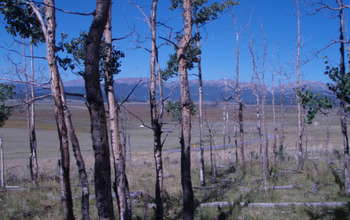Research News
Climate change increases risks of tree death
U.S. forests could look very different by the end of the century
May 25, 2022
Planting a tree seems like a good thing to do for the environment. Trees take in carbon dioxide, offsetting some of the emissions that contribute to climate change.
But all that carbon in trees and forests worldwide could be thrown back into the atmosphere again if the trees burn up in a forest fire. Trees also stop scrubbing carbon dioxide from the air if they die due to drought or insect damage.
The likelihood of those threats impacting forests is increasing nationwide, according to U.S. National Science Foundation-supported research in Ecology Letters, making relying on forests to soak up carbon emissions a much riskier prospect.
"U.S. forests could look dramatically different by the end of the century," says William Anderegg, study lead author and an ecologist at the University of Utah. "More severe and frequent fires and disturbances have huge impacts on landscapes. We are likely to lose forests from some areas in the Western U.S. due to these disturbances, but much of this depends on how quickly we tackle climate change."
The researchers modeled the risk of tree death from fire, climate stress (heat and/or drought) and insect damage for forests throughout the United States, projecting how those risks might increase over the course of the 21st century. Their findings can be viewed in an interactive map.
By 2099, the models found that United States forest fire risks may increase by between four and 14 times, depending on different carbon emissions scenarios. The risks of climate stress-related tree death and insect mortality may roughly double over the same time.
But in those same models, human actions to tackle climate change mattered enormously -- reducing the severity of climate change dramatically reduced the fire, drought and insect-driven forest die-off.
"Climate change is going to supercharge these three big disturbances in the U.S.," Anderegg says. "Really hot and dry years, driven by climate change, tend to drive lots of fires, climate-driven tree mortality and insect outbreaks. Addressing climate change quickly can help keep forests and landscapes healthy."
Adds Irwin Forseth, a program director in NSF’s Division of Integrative Organismal Systems, which co-funded the study with NSF's Division of Environmental Biology, "This research, integrating the effects of multiple environmental factors and developing predictive models, is valuable to our ability to potentially mitigate some of the negative effects of climate change on forest ecosystems. These approaches will enhance our ability to manage and maintain the many societal benefits that forest ecosystems provide."






修改评论